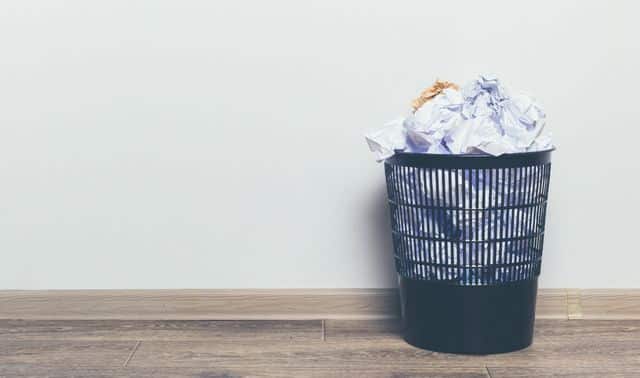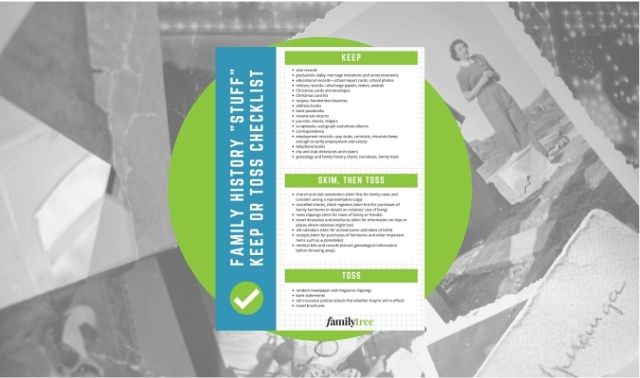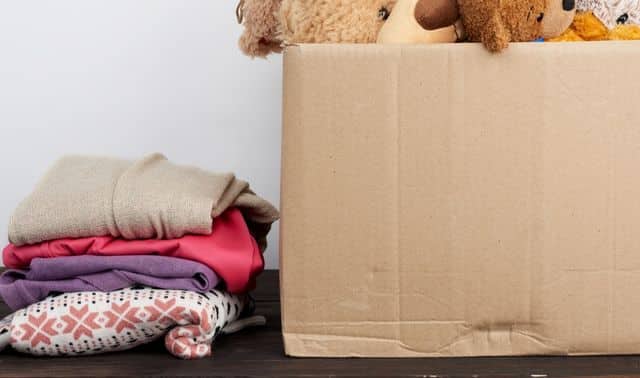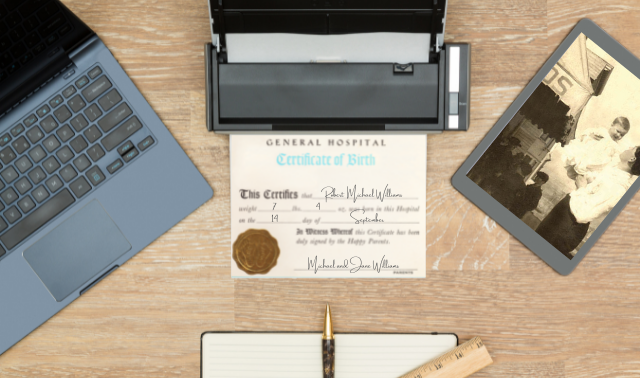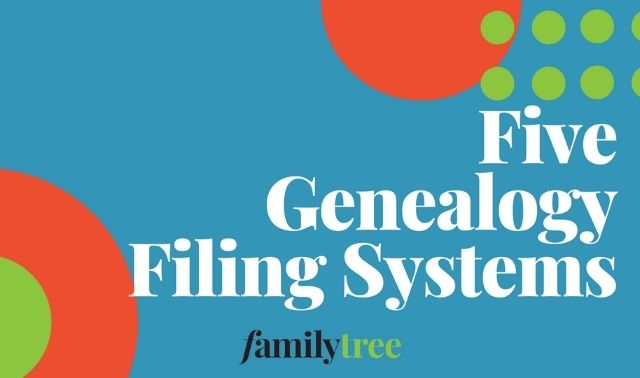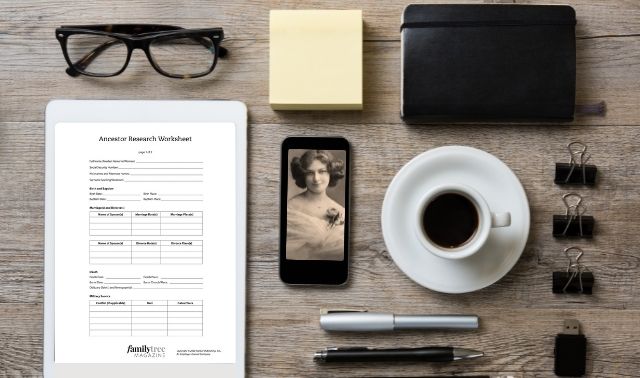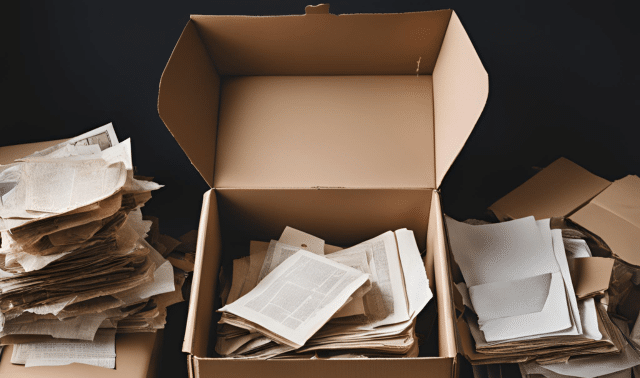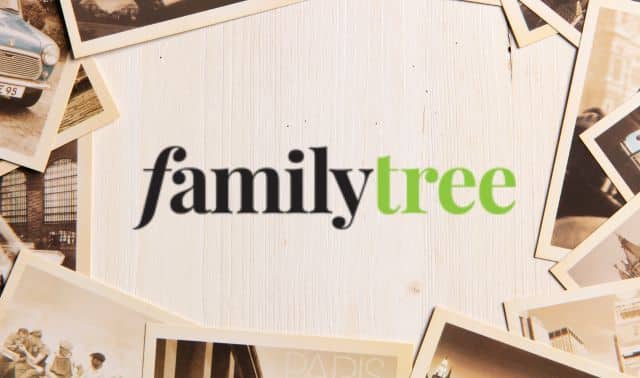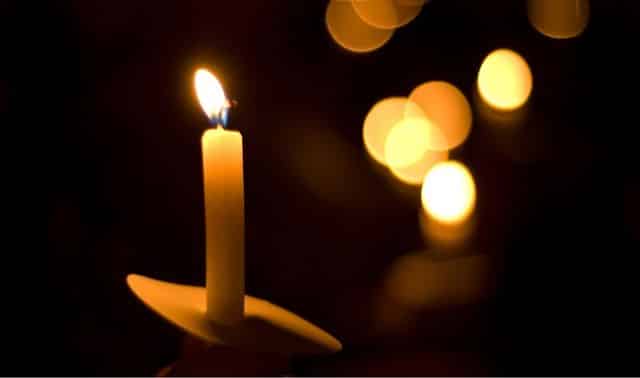Are you drowning in a sea of papers, documents, old photographs, and other research materials? That’s what genealogy is made of, but all that stuff can clutter your home and overwhelm you. There’s only so much space, and having too many genealogical items makes it hard to access what you really need and pass research on to future generations.
What can you do with it all? There are really only two possibilities: toss it out, or keep it. Some objects are obvious “keeps” or trash. But what about the things in between? How can you determine what’s worth saving?
If you feel more like a family history hoarder than historian, come on down and become a contestant on the genealogists’ favorite game show, Keep or Toss? This three-step guide will help you win today’s fabulous prize: a lean, well-curated family history collection.
Step 1: Sort and Separate
No matter what the task is, your first step is always the same: Decide what you want to accomplish. Tackling a pare-down project is no different, but can feel overwhelming—particularly if you’ve been researching for years and are just now getting started.
You might remember that old saying: “How do you eat an elephant? One bite at a time.” Apply this principle while going through your materials. Choose a box, container or photo album. Remove everything and identify what each item is, then try to sort.
As you work through your research materials, don’t forget to parse through the following items:
- photos (both loose and in boxes) and photo albums
- unfiled papers
- digital files or emails you’ve printed
- family mementos
- passports or other identification documents
- vital certificates
- newspaper clippings
- military paperwork and memorabilia
- memorial/funeral cards and books
- bridal books
- baby books
- yearbooks
- family newsletters
- receipts or utility bills
- old scrapbooks/autograph books
- postcards
- genealogy or history books
- county histories
You can also consider larger physical items like furniture, jewelry, china and glassware and more. See tips for managing those items at this link:
Create three sections on your table, desk, floor, or wherever you do your sorting: one for “Keep,” one for “Donate,” and one for “Toss.” You may feel the need for a fourth area, “Undecided”; if you opt for that section, reserve it only for items you’re truly uncertain about, and come back to them before the end of your session.
Step 2: Evaluate Your Items
The sad truth is that we can’t keep everything. We’ve all heard tales of family treasures being sold off to flea markets or auctioned on eBay. I’ve even heard of someone who rented a couple dumpsters and trashed his mother’s belongings just a few days after her death.
Many people simply don’t want more stuff, particularly younger generations who might not know the importance of antiques and heirlooms. Though it can be hard for genealogists to let go of anything that connects us to the past, we have to draw the line between packrat and curator.
And wouldn’t it be better to personally decide the fate of your items, rather than having a (possibly uncaring) family member or estate-clearance company do it for you? There’s a lot to be said for attending to as many of our own belongings as we can, before the inevitable happens. It’s even the basis of a whole organization method: “Swedish death cleaning.”
With that in mind, you’ll need a framework for evaluating which of your items are worth keeping. First consider how much space you can comfortably allot for genealogy research and items. Then comes the hard part—determining what items are worth keeping and what aren’t.
One popular strategy has its roots in Japanese Shintoism. In 2011, organization consultant Marie Kondo published a book outlining her “KonMari” method. Translated into English as The Life-Changing Magic of Tidying Up (Ten Speed Press), the book suggests considering whether items “spark joy” when held. Those that do can stay, and those that don’t should be thrown away. Owning only items that bring us joy, the KonMari method states, can bring clarity and peace of mind. The popularity of Kondo’s method led to two popular reality TV series on Netflix.
While many embraced the KonMari method, others felt it was too extreme or placed too much emphasis on the idea of “joy.” Regardless of what you think of Kondo’s criteria, the method does highlight the importance of an organizational mindset.
For family historians, your sorting criteria should include assessments of an item’s value and its ability to be passed on. Here are five important questions you might use to evaluate each item in your collection:
- Is this item irreplaceable (i.e., one-of-a-kind)?
- Is a digital version available? Would it be just as useful?
- Who will inherit the information or item when I die? Will it be easy to store, and have others shown any interest in it?
- What practical value is associated with the item? Is it worth a lot of money, or does it provide some intangible research benefit to you or descendants (for example, proving an ancestral line)?
- What sentimental value is associated with the item? Does it represent a meaningful memory or person?
There aren’t simple answers to these questions, and you’ll need to consider each item in context. For example, some original documents can easily be digitized but don’t have the same value when viewed as a scan: birth, marriage or death certificates; family Bibles; prayer books; photos; and so on. By comparison, my grandmother’s electric bills (though original documents) wouldn’t hold the same value for me as her original passport.
Other items may provide interesting information about your ancestor’s time period, but not be worth saving in and of themselves. Receipts and pay stubs have some social history value, but you don’t need to keep all of them. Select a few representative examples to scan, and discard the rest. Old family newsletters, too, are probably best scanned and saved as PDFs, then discarded.
The checklist below offers one archiving expert’s suggestions on what types of items should be kept and tossed.
Let’s look at another example. Old newspapers or magazines take up a lot of space and decay quickly. (In fact, they can damage other materials as they do so!) And, because they were mass-produced, they’re probably already available in digital formats. The Library of Congress, Newspapers.com, and GenealogyBank are just a few websites that hold historical newspapers, and sites like Google Books and the Internet Archive have digital copies of magazines and books. As a result, they probably aren’t worth keeping unless they specifically mention someone in your family.
You might also think about what medium an item is in. Say you have 8mm film or Betamax video tapes, but no way of viewing them. Send the originals off to a digitization service so you can still access those family memories.
Sorting through digital items
Don’t forget digital items as well! Though digital decluttering probably won’t save you much space in your home, it might very well bring you peace of mind. New Atlas and the BBC have both covered “digital hoarding” and how to overcome it.
Here are just some digital items to apply your “keep or toss?” criteria to:
- GEDCOMs and/or family tree files from genealogy software
- saved e-mails and social media posts
- digital images of records downloaded from genealogy websites
- scanned family photos and documents
- digital books and publications: ebooks, PDFs, etc.
- interview recordings (either audio or video)
- educational materials: downloaded webinars, podcasts, syllabi, and presentation handouts
- raw DNA test results
- website bookmarks
Back up important information you plan to keep to the cloud or an external hard drive, then delete the rest. If you’re getting rid of a device, make sure to follow instructions so any personal data is really deleted and not residing in a cache that can be recovered. (Read more tips for protecting your online privacy during research.)
Step 3: Donate and Curate
For those items you choose to discard, do so safely and securely to protect any personal information. Consider using a shredding service, or (in special circumstances) burning items under controlled and legally permitted conditions. Be respectful of items such as worn-out flags and fragile items like glass.
Of course, not all items that you label “toss” have to go into a garbage can or recycling bin. Old jewelry can be parlayed into new creations, or clothes reconstituted into quilts or stuffed animals for younger generations. Or perhaps a family member is interested in taking certain items off your hands.
You can also make alternate arrangements for your items. Local charities will take furniture, clothing, books, and other useful items that are in good condition.
If you’re getting rid of a sizeable, curated portion of your research, you could try bequeathing it to a local library, genealogical or historical society, or an ethnic organization. Start locally, and be sure to understand the organization’s policies and guidelines. (Contact the curator directly, if necessary.)
On a wider level, the Genealogy Center of the Allen County Public Library and the FamilySearch Library each collect some genealogy papers, books, and other data, as do regional museums or archives. A quick online search will turn up organizations in your area (or in your ancestor’s hometown) that could be the perfect new home for your family treasures. Consult Melissa Barker’s “A Genealogist in the Archives” blog for suggestions and tips. One example is the Senator John Heinz History Center in Pittsburgh, which collects materials that document the lives of Western Pennsylvanians and the history of the region.
For heritage-specific items such as your great-grandpa’s Russian military uniform, consider an ethnic genealogical society or museum. One such organization, The American Historical Society of Germans from Russia in Lincoln, Neb., presents rotating displays of donated items that German settlers brought with them from Russia. Their artifact and donation guidelines can be found on their website.
And what about items you’re keeping? Store them using an archival-safe strategy. Use acid-free or buffered materials to prevent decay, and keep items in a dark place with stable temperature and humidity. Stock up on archival supplies, too, such as:
- white cotton or nitrile gloves to prevent leaving fingerprints while holding photos or negatives
- white butcher paper (available in rolls) to cover a sorting area
- archival-safe plastic clips to replace pins, staples and metal clips
- 3×5-index cards and markers to create labels (as opposed to using sticky labels, laminating, or writing directly on the items)
How you choose to organize the materials you intend to keep will depend on two primary factors: how you want to use the connection, and what available space you have. Denise May Levenick, “The Family Curator,” suggests working through materials carefully, considering each item in the collection before committing to an overall organization scheme. For example, do you need all or some of the items as part of an ongoing research project? If so, you’ll want to keep the relevant items handy, and grouped together for easy access.
For my own keepsakes, I have a designated multi-tier shelf in a closet that is cool and dry. I organize materials by family line: a shelf for my Alzo line, a shelf for my Figlar line, and so on. I sub-divide by item type (photographs, documents, heirlooms, etc.) and store everything in an appropriate archival-safe box or container. All items are clearly labeled with the family name, the date and a brief description.
For genealogists, connections to the past are essential to learning about our ancestors. But we must also balance this and the need to preserve and share our research with future generations with less hassle and more joy.
Related Reads
A version of this article appeared in the September/October 2022 issue of Family Tree Magazine.

